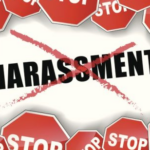The Role of Bystander Intervention in Addressing Harassment and Discrimination
Harassment and discrimination are pervasive issues that affect individuals in various aspects of life. While the victims often bear the brunt of such behaviors, bystanders play a crucial role in shaping the narrative. Bystander intervention involves individuals stepping in to address and prevent harassment or discrimination. Understanding the significance of this role can contribute significantly to creating a safer and more inclusive environment.
- Recognizing the Signs: Bystander intervention starts with the ability to recognize signs of harassment or discrimination. These signs may manifest in verbal abuse, exclusionary behavior, microaggressions, or other forms of mistreatment. By being aware and attentive to these cues, bystanders can become active participants in creating a culture that does not tolerate such actions.
- The Power of Speaking Up: One of the most impactful ways bystanders can intervene is by speaking up when they witness harassment or discrimination. This can involve calmly and assertively addressing the situation, expressing disapproval, and supporting the victim. The act of speaking up sends a powerful message that such behavior is unacceptable and helps create a safer space for everyone.
- Offering Support to the Victim: Victims of harassment or discrimination often feel isolated and vulnerable. Bystander intervention includes offering support to the victim, whether through direct communication, expressing empathy, or helping them seek additional assistance. A simple act of kindness can make a significant difference in the victim’s experience and well-being.
- Distraction and Deflection Techniques: In situations where’s direct confrontation may not be feasible, bystanders can use distraction or deflection techniques. This involves diverting the attention away from the harasser and diffusing the situation without escalating tensions. These techniques can be particularly useful in public spaces or social settings.
- Reporting Incidents: Bystanders also play a critical role in reporting incidents of harassment or discrimination to relevant authorities. This could involve notifying supervisors, human resources, school administrators, or law enforcement, depending on the context. Reporting ensures that appropriate action is taken and helps prevent further harm.
- Educating and Raising Awareness: Bystander intervention extends beyond immediate actions. It involves actively participating in educational efforts to raise awareness about harassment and discrimination. Bystanders can engage in conversations, workshops, and initiatives that promote understanding, empathy, and a collective commitment to fostering a respectful and inclusive environment.
- Creating a Culture of Accountability: Bystander intervention contributes to the creation of a culture where individuals are held accountable for their actions. When bystanders consistently speak up and take action, it sends a clear message that harassment and discrimination will not be tolerated. This cultural shift can have a long-term impact on preventing such behaviors.
- Training Programs for Bystander Intervention: Organizations and communities can enhance bystander intervention by implementing training programs. These programs provide individuals with the skills and knowledge needed to effectively intervene in various situations. Bystander intervention training empowers individuals to become proactive agents of change in their respective environments.
- Promoting Diversity and Inclusion Initiatives: Supporting and actively participating in diversity and inclusion initiatives is another way bystanders can contribute to addressing harassment and discrimination. By fostering an inclusive environment, bystanders help create a culture that values and respects diversity, making it less conducive to discriminatory behaviors.
- Encouraging a Collective Responsibility: Ultimately, bystander intervention emphasizes the idea that addressing harassment and discrimination is a collective responsibility. When individuals come together to stand against mistreatment, it creates a powerful force for change. By fostering a sense of community and shared values, bystanders contribute to building a society that rejects discrimination in all its forms.
In conclusion, the role of bystander intervention cannot be overstated in the fight against harassment and discrimination. Every individual has the power to make a difference by being vigilant, speaking up, offering support, and actively contributing to the creation of a safe and inclusive environment. Together, as active bystanders, we can build a society where everyone feels respected and valued.











 LOOKING FOR A JOB?
LOOKING FOR A JOB?